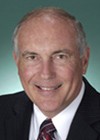Electoral Form Guide: Wide Bay
Electorate: Wide Bay
Margin: Nationals 8.5%
Location: Gympie/Maryborough, Queensland
In a nutshell: Wide Bay was last held by Labor in 1974, and became very safe for the Nationals during the period of the Howard government. Current Nationals leader Warren Truss has held the seat since 1988.
The candidates
|
|
|
Electorate analysis:
Wide Bay has covered a variable area around Maryborough about 300 kilometres north of Brisbane since its creation at federation. It currently extends along the coast from Noosa Heads north to Maryborough, and inland through Gympie to Murgon. The redistribution has effected minor changes, adding 2700 voters in lightly populated territory in the area of Fraser Coast Regional Council from Hinkler and transferring 2100 voters around Doonan to Fairfax. The seat’s inaugural member was Andrew Fisher, who served three short (by modern standards) terms as Prime Minister and formed the world’s first majority Labor government in 1910.
The first incarnation of the Liberal Party gained the seat when Fisher resigned due to ill health in 1915, and it was in Country Party hands from 1928 until Brendan Hansen finally won the seat back for Labor in 1961. Hansen held the seat until defeated in 1974 by the Country Party’s Clarrie Millar in 1974, who was succeeded in 1990 by Warren Truss. The margin through this period has usually been in the single figures, but it become safer for the Nationals following big swings in 1996 and 2001. The swing in 2007 was 3.7 per cent, which was extremely mild by Queensland standards.
Warren Truss was a councillor for the Shire of Kingaroy – Joh territory – from 1976 to 1990, and won National Party endorsement to succeed Bjelke-Petersen as member for Barambah when he finally retired in 1988. However, the by-election delivered a shock victory to Trevor Perrett, who ran as a candidate for the eccentric Citizens Electoral Council before joining the Nationals a year later. Truss entered federal parliament two years later and was given the shadow consumer affairs portfolio in November 1994, but was chopped from the front bench on entering government due to the Nationals’ loss of relative seat share at the 1996 election. His opportunity came after the 1997 travel rorts affair gained three ministerial scalps, including Nationals member John Sharp, and he assumed the customs and consumer affairs portfolio that October.
Truss progressed to community services after the 1998 election, agriculture, fisheries and forestry in July 1999, transport and regional services in July 2005 and trade in September 2006, also securing his party’s deputy leadership when John Anderson moved on as leader in July 2005. From there he moved on to the leadership when Mark Vaile resigned after the 2007 leadership, although it is often complained his profile is far below that of state colleague Barnaby Joyce. His portfolios in opposition have been infrastructure and transport up to September 2008, exchanging infrastructure for trade and regional development when Malcolm Turnbull became Opposition Leader in September 2008.
Analysis written by William Bowe. Read Bowe’s blog, The Poll Bludger.



